
My story began as a volunteer with the Galapagos Verde 2050 project, from the Charles Darwin Foundation, which has now entered its second phase and has as a new aim towards rural ecological restoration. The goal that has been proposed with the leadership of Dr. Patricia Jaramillo, leader of the Galapagos Verde 2050 project (GV2050) is the ecological restoration of typical flora from the archipielago using endemic and native species, and also the elimination of invasive spe-cies that affect the rural areas of study and through this, the ecology of the islands.
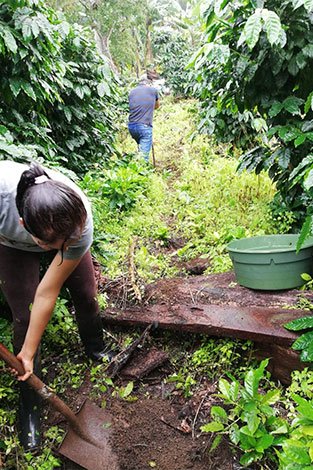
Galapagos functions mainly through tourism, which implies a population growth that demands greater food production (Proaño 2007, Trueman et al., 2010). Therefore the balance between conservation and agricultural production should be a priority. The fulfillment of this objective can generate a mutual benefit for both the aims of the project and for the owners and staff of the farms, providing greater conservation, production and tourist attraction in each case.
During the stay of some local, nacional and international volunteers in the GV2050 project, the planting in the 4 study farms from Santa Cruz have been successfully completed during the months of August and September of the present year.
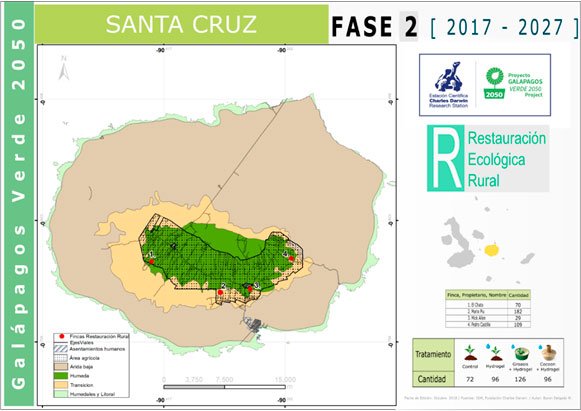
Although all four study sites lie within the humid or transition vegetation zones, they all have their own unique characteristics regarding their terrain. As a result, personalized designs were created to satisfy the ground, as well as the needs and recommendations of each farmer keeping in mind the environment and its ecosystem.
Within the experimental designs of the farms, a model was made in which the different plants were distributed amongst the three types of technology used in the project (Groasis + Hydrogel, Cocoon + Hydrogel and Hydrogel on it’s own) and also control, they were planted approximately every 5-10 meters (depending on the farm) interspersed with the different treatments, trying at all times to combine them to later study the effectiveness of each treatment (Jaramillo et al., 2015b).
The five chosen species to plant at the study sites were representative of the highlands of Santa Cruz and met the desires of the landowners. These species planted were: Croton scouleri var. scouleri (chala), Piscidia carthagenensis (matazarno), Psidium galapageium (guayabillo), Scalesia pedunculata var. pedunculata (lechoso) and Darwiniothamnus tenuifolius (Darwin's daisy) (Wiggins & Porter, 1971; León-Yánez et al., 2011); all these plants were collected thanks to the absolute support of the Directorate of the Galapagos National Park and its forestry nursery.
Once it was time to start sowing, we organized and dynamized all the activities thanks to the fact the whole team brought their keenness and enthusiasm, making the effort and time of work not seem as much ... Even all the ant bites were barely noticeable!
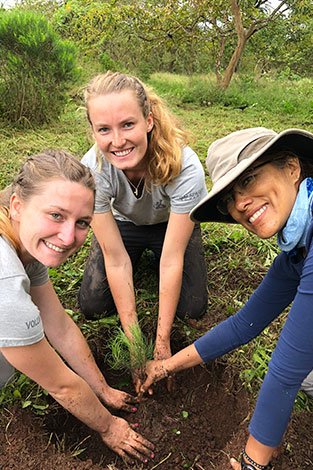
Interacting with the owners and staff on the farms has been a very enriching experience. It is so valuable to hear about their concerns regarding the environment, their vision of the future and their willingness to fix potential problems, all in addition to having their full support when the time came to work.
Many people think that conservation projects and production sectors are not interested in collaborating, but this initiative and its success so far, is a sign that an agreement can be reached where both parties benefit equally. The world is beginning to alter its way of thinking regarding conservation, which is why this project seeks to fulfill its goal of ecological restoration through collaboration between local entrepreneurs and other institutions.
Giving support to the local community is a challenge that inspires, especially if it’s local farmers who intend to return the unique landscape that Galapagos calls its own. Also, the project's fascinating initiative also supports agrotourism, making farmers improve their local economy not only from the tourism they have generated through their farms, but also understanding the ecological value of having unique species in the world along with emblematic species such as giant tortoises around native and endemic species (Weiss 2018; Comín et al. 2018; Jaramillo 2015; Jaramillo et al. 2015a).
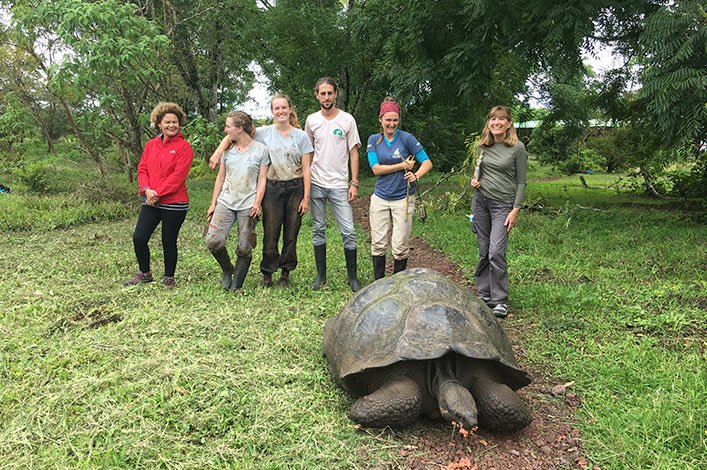
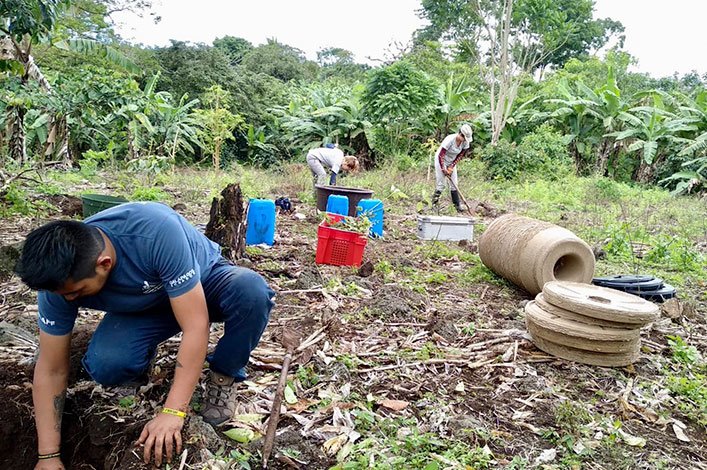
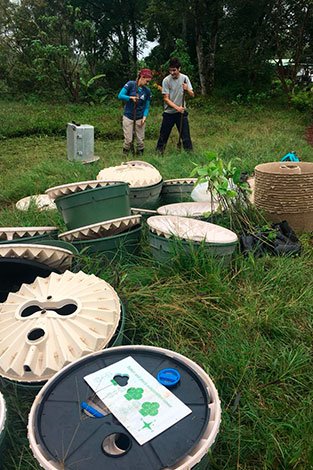
Once the different species are planted, the next step is to do the monitoring. At this time, the information of each plant is recorded on a organised piece of paper. The information added is; the species to which it belongs, its size, the state of each plant and the technology in which it has been planted. In addition, each plant is provided with an unique code and is related to the GPS point by means of the Android Application developed for the project. Later in the office, the plant’s recorded data is revised and included through the virtual platform of the project.
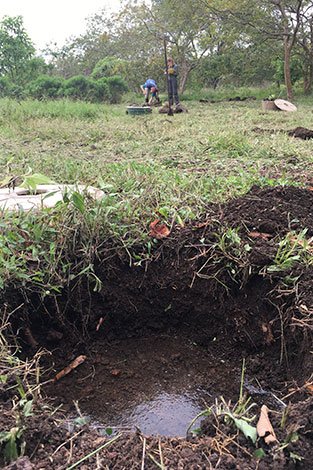
The work has definitely not been easy, it requires great physical effort and dedication which not everyone would enjoy. For example planting a total of 391 plants in the different conditions of the highlands. However the appreciation shown by the owners and workers of the farm once they realize the effort made is all for a worthwhile cause, makes all the hard work worth it. Furthermore, seeing the progress made by the team, pushes us to continue searching for new goals.
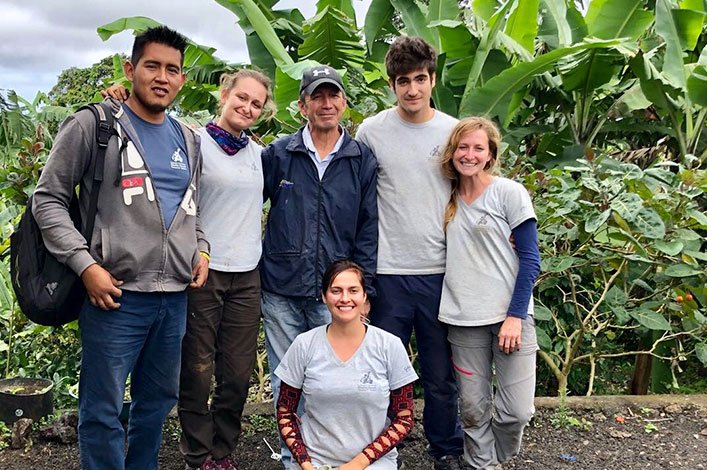
I am certain the hard work this project has accomplished in the 3 short months I have been here is unmistakable, and I hope to return in a few years to have coffee with all the staff, reflecting on how the forests of Scalesias, Guayabillos, Matazarnos and Chalas have grown amongst the crops and coffee plantations. Also to see how tourists walk along the paths of Reserva El Chato and see the tortoises between the large bushes of Darwin daisies blooming and giving color to the paths. In other words, to see the progress that this team has made in the protection and responsibility for conservation of endemic and native species of the Galapagos.

Being a part of the GV2050 team has made me realize the importance of socializing and involving people in environmental conservation. We are all aware of the paramount importance of nature, and that we should all care and respect it, however we do not give ourselves credit for the great changes that are made by small actions. I emphasize the great contribution of the farmers and motivate to continue working with them to obtain even better results.
I believe that great changes will be achieved if each one of us tries to do their bit.
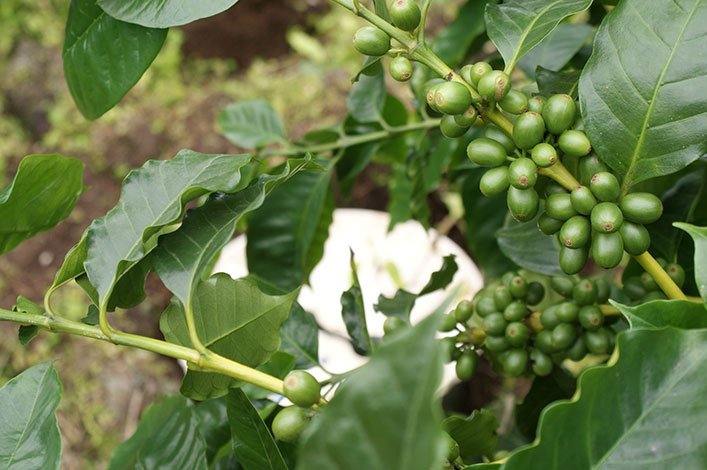
GV2050 project is implemented in collaboration between Charles Darwin Foundation and Galapagos National Park Directorate. The project is financially viable thanks to the support of the COmON Foundation, The Leona M and Harry B. Helmsley Charitable Trust and the BESS Forest Club. I would also like to extend my thanks Maria del Mar Trigo and the University of Malaga for this opportunity, to Patricia Jaramillo Díaz for her revision, edition of this piece and Esme Plunkett for the translation.

References:
Comín F, Miranda B, Sorando R, Felipe-Lucia M, Jiménez J, Navarro E (2018) Prioritizing sites for ecological restoration based on ecosystem services. doi:10.1111/1365-2664.13061
Jaramillo P (2015) Water-saving technology: the key to sustainable agriculture and horticulture in Galapagos to BESS Forest Club (April 2015).
Jaramillo P, Guézou A, Mauchamp A, Tye A (2017) CDF Checklist of Galapagos Flowering Plants - FCD Lista de especies de Plantas con flores de Galápagos. Charles Darwin Foundation Galapagos Species Checklist - Lista de Especies de Galápagos de la Fundación Charles Darwin
Jaramillo P, Lorenz S, Ortiz G, Cueva P, Jiménez E, Ortiz J, Rueda R, Freire M, Gibbs J, Tapia W (2015a) Galapagos Verde 2050: An opportunity to restore degraded ecosystems and promote sustainable agriculture in the Archipelago. In: Cayot L, Cruz D, Knab R (eds) GALAPAGOS REPORT 2013 - 2014. GNPD, GCREG, CDF, and GC, Biodiversity and Ecosystem Restoration, pp 133-143
Jaramillo P, Ortiz G, Masaquiza F, Rueda D, Tapia W, Gibbs J Galápagos Verde 2050 – Technology Innovation in Support of Ecological Restoration. In: Science, Conservation, and History in the 180 Years Since Darwin, 2015b.
McMullen CK (1999) Flowering plants of the Galapagos. Cornell University Press, Ithaca, NY
Proaño ME, Epler, B. (2007) El turismo en Galápagos: una tendencia al crecimiento. In: Informe Galápagos 2006-2007. FCD, PNG & INGALA, Puerto Ayora
Trueman M, Atkinson R, Guézou A, Wurm P (2010) Residence time and human-induced propagule pressure at work in the alien flora of Galapagos. Biol Invasions 12 (12):3949-3960. doi:10.1007/s10530-010-9822-8
Weiss S (2018) A new method to help recover ecological functions and foster the sustainable development of rural areas. British Ecological Society. doi:https://www.britishecologicalsociety.org/ecosystem-restoration/
Wiggins IL, Porter DM (1971) Flora of the Galápagos Islands. Stanford University Press, Stanford, California




